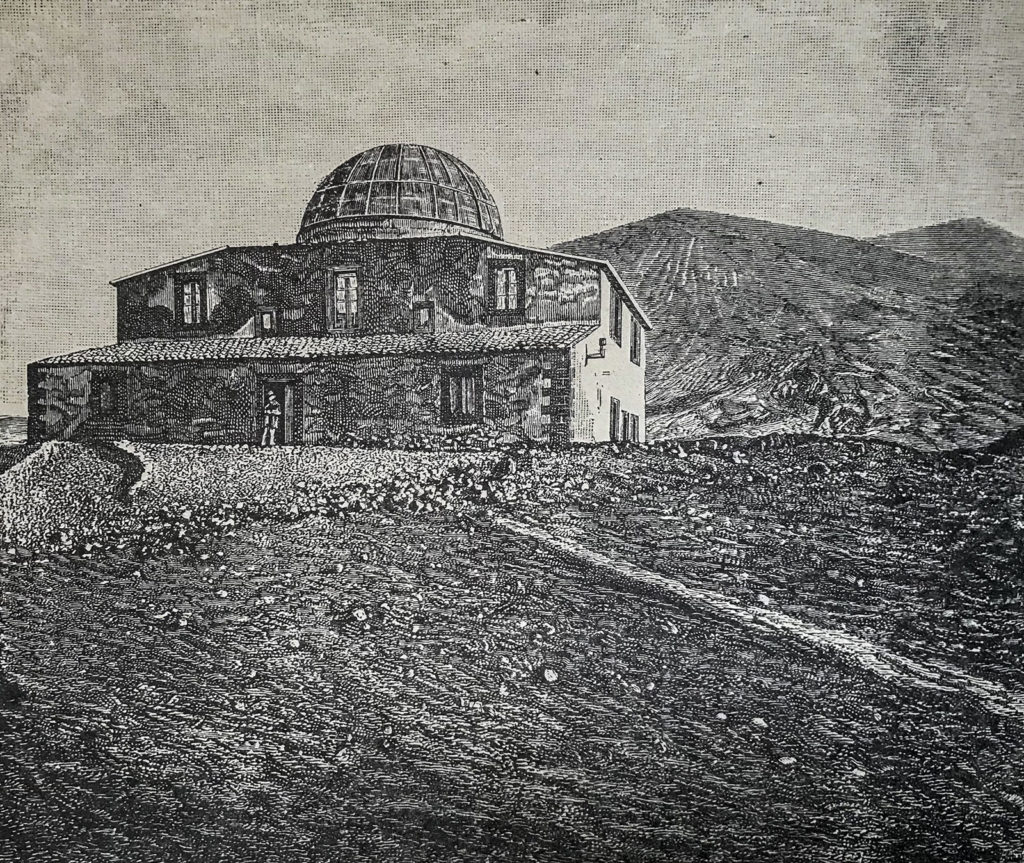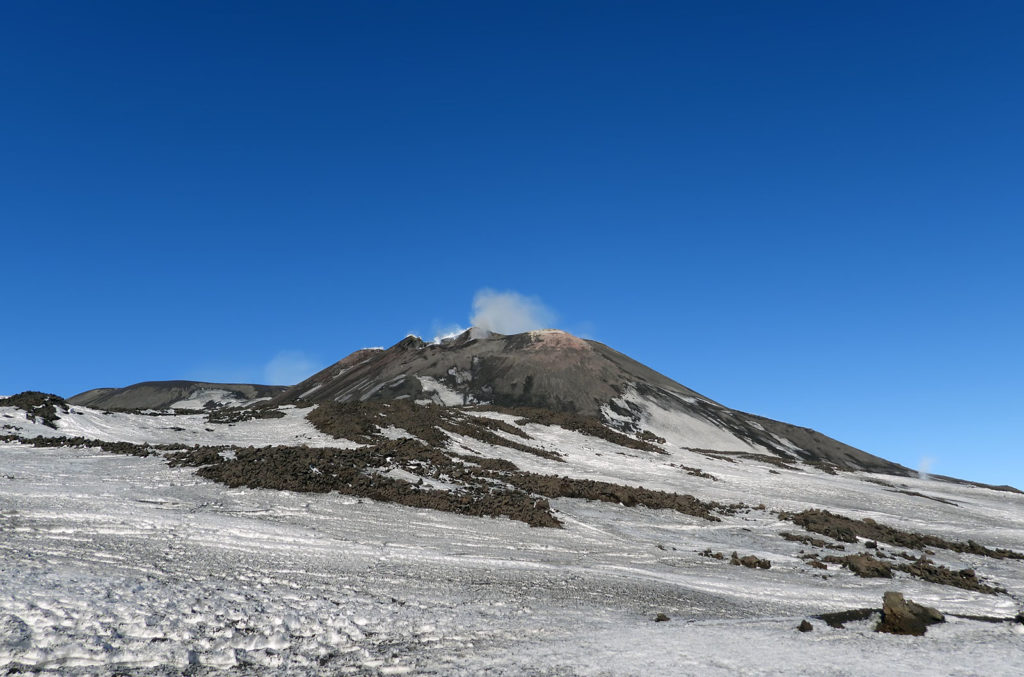In past centuries, shelters were built at different altitudes on the volcano, even in areas where today no one would ever think of building something.
The oldest refuge was found at an altitude of 2920 metres, at the base of the summit craters, on a small hill called Torre del Filosofo. It is said that the ruins of this refuge, now completely covered over by recent lava, were those of the philosopher Empedocles, which is where this area took its name. Aside from the various shelters built in the Etnean caves, used by travellers from all over Europe until the end of 1700, between the late 19th and 20th century, others were built on Etna at every height. One of the historical buildings beyond the Etna Observatory on the upper north-eastern flank is “La Casa degli Inglesi” (House of the English).
 In 1804, the scholar
Mario Gemmellaro
In 1804, the scholar
Mario Gemmellaro
had a modest hut built at his own expense on the plateau adjacent to the ruins of the Torre del Filosofo and named it “La Gratissima”. His brother Carlo, who was also a doctor in the service of the British fleet stationed in Messina, had the chance in 1811 to accompany some of His Majesty’s officers on an excursion to the crater and to offer them lodging at La Gratissima. Grateful and fascinated by the trip, they offered to build a larger and more comfortable building next to the first one, which was called “Casa degli Inglesi” (House of the English) in their memory. It was then used for over half a century.

In 1960, a refuge was built dedicated to Empedocles, a philosopher from Agrigento, and the area was also named after him. This refuge was subsequently modernised and used as a base for scholars from all over the world throughout the late 20th century, before being partially buried by the eruptive flows of 2001. After this event, only part of the roof and the antennas mounted on it remained visible. After the 2002-03 eruption, when one of the two cones formed a few dozen metres from the refuge, all traces of it disappeared.